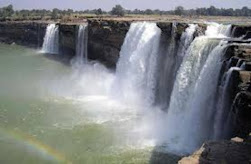Subhash Chandra Bose, born on January 23, 1897, in
Cuttack, India, remains one of the most iconic figures in the Indian struggle
for independence. His life, characterized by unyielding patriotism and
visionary leadership, inspired millions and left a lasting impact on the quest
for freedom from British colonial rule.
Bose hailed from a prominent Bengali family. His
father, Janakinath
Bose, was a lawyer, and his mother, Prabhavati Devi, was a strong influence
on his early values, instilling in him a sense of nationalism and commitment to
social justice. Subhash excelled in academics, eventually earning a degree in
philosophy from the University of Calcutta. He furthered his studies in
England, where he attended the University of Cambridge. During this time, he
became increasingly influenced by the political climate of India and the
growing dissatisfaction with British rule.
Bose's political career began in earnest when he
joined the Indian National Congress (INC). His early political philosophy was
shaped by his belief in the necessity of direct action against colonial rule.
Unlike other leaders who advocated for a more conciliatory approach, Bose
sought to galvanize the masses through radical means. His tenure as the
president of the INC in 1938-1939 marked a turning point. He proposed a more
militant approach to achieving independence, advocating for complete freedom
rather than mere constitutional reforms.
Bose’s vision for India was not limited to political
independence. He aimed for a social revolution that would uplift the
marginalized and create a just society. His famous slogan, "Give me blood,
and I shall give you freedom," encapsulated his commitment to the cause,
urging Indians to take up arms against their oppressors.
After the British arrested him in 1940, Bose
made a daring escape to Germany, where he sought support from Axis powers
during World War II. His time in Europe was marked by strategic alliances and
efforts to garner international support for India’s independence. In 1943, he
moved to Japan and took command of the Indian National Army (INA), formed to
fight against British forces. Bose’s charisma and leadership inspired many
soldiers, and he famously declared, "Dilli Chalo!" (March to Delhi),
rallying his troops towards the goal of liberating India.
Under his leadership, the INA fought valiantly,
capturing territories in northeastern India. Although the INA faced significant
challenges, including logistical difficulties and military setbacks, Bose's
dedication to the cause invigorated the independence movement.
Subhash Chandra Bose's life came to a tragic end on
August 18, 1945, in a plane crash in Taiwan, although the circumstances surrounding
his death remain shrouded in mystery. Despite his early demise, his
contributions to the Indian freedom struggle have left an indelible mark on
history.
Bose's legacy is multifaceted. He is celebrated as
a hero who embodied the spirit of resistance against colonialism. His emphasis
on self-reliance and empowerment continues to resonate in contemporary India.
Schools, institutions, and statues across the nation bear his name, serving as
a reminder of his dedication to India's freedom.
In conclusion, Subhash
Chandra Bose's relentless pursuit of independence and his revolutionary spirit
exemplify the courage and determination that characterized India’s struggle
against colonial rule. His vision for a free and equitable India remains a
source of inspiration for generations, reaffirming the belief that the fight
for justice and freedom is a timeless endeavor.















